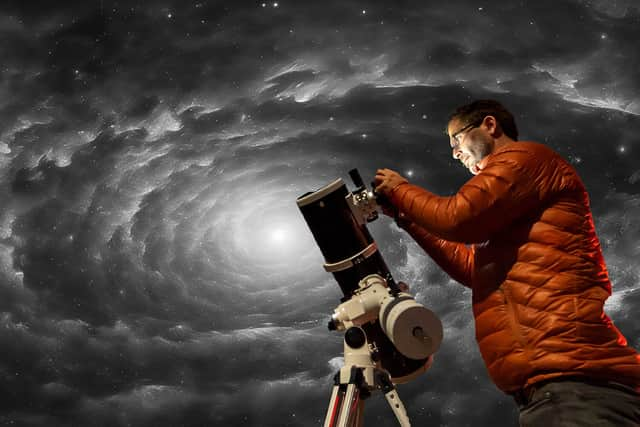‘Extraordinary event’: astronomers capture the largest cosmic explosion ever seen in the universe
and live on Freeview channel 276
Astronomers have captured the largest cosmic explosion ever witnessed, lasting three years and so far releasing “about 100 times as much energy as the sun will in its 10 billion year lifetime.”
The flare-up was traced eight billion light years away and is more than 10 times brighter than any known supernova (exploding star), making it the most energetic explosion on record.
Advertisement
Hide AdAdvertisement
Hide AdThe “extraordinary event”, known as AT2021lwx, is thought to have been triggered by a giant cloud of gas being gobbled up by a supermassive black hole.
Scientists believe the cloud of gas may have come from the large dusty “doughnut” that surrounds black holes, but it is not clear what may have knocked it off course from its orbit.
The explosion was first detected in 2020 by the Zwicky Transient Facility in California but the event initially did not stand out.
Only during follow-up observations, when its distance was calculated, did the astronomers realise they had spotted an incredibly rare event.


‘Encountering such a huge star is very rare’
Advertisement
Hide AdAdvertisement
Hide AdDr Philip Wiseman, an astronomer at Southampton University who led the observations, said his team members “were all just so shocked” when he told them of the news.
He told the Guardian: “Once we understood how extremely bright it was, we had to come up with a way to explain it.”
It was outside the plausible range for a supernova and so astronomers turned to the other common scenario that causes bright flashes in the night sky.
The only other explanation is a tidal disruption event which typically involves a star straying too close to a black hole and being shredded, with part being swallowed and the rest being stretched out in a swirling disc.
Advertisement
Hide AdAdvertisement
Hide AdBut simulations suggested a star up to 15 times the mass of the sun would have been required to account for AT2021lwx.
Wiseman said: “Encountering such a huge star is very rare, so we think a much larger cloud of gas is more likely. It went unnoticed for a year as it gradually got brighter.
“We’ve estimated it’s a fireball 100 times the size of the solar system with a brightness about 2tn times the sun’s. In three years, this event has released about 100 times as much energy as the sun will in its 10 billion year lifetime.”
A gamma-ray burst, known as GRB 221009A, spotted last year, is the brightest phenomenon ever witnessed but it only lasted minutes.
Advertisement
Hide AdAdvertisement
Hide AdAT2021lwx is still going strong, meaning the overall energy release is far greater.
The researchers, whose findings are published in the Monthly Notices of the Royal Astronomical Society, said: “Further follow-up and modelling of AT2021lwx is necessary to reveal more about the scenario that caused the flare, and the community is strongly encouraged to search for similar events in both the future and in archival data.”
Comment Guidelines
National World encourages reader discussion on our stories. User feedback, insights and back-and-forth exchanges add a rich layer of context to reporting. Please review our Community Guidelines before commenting.
